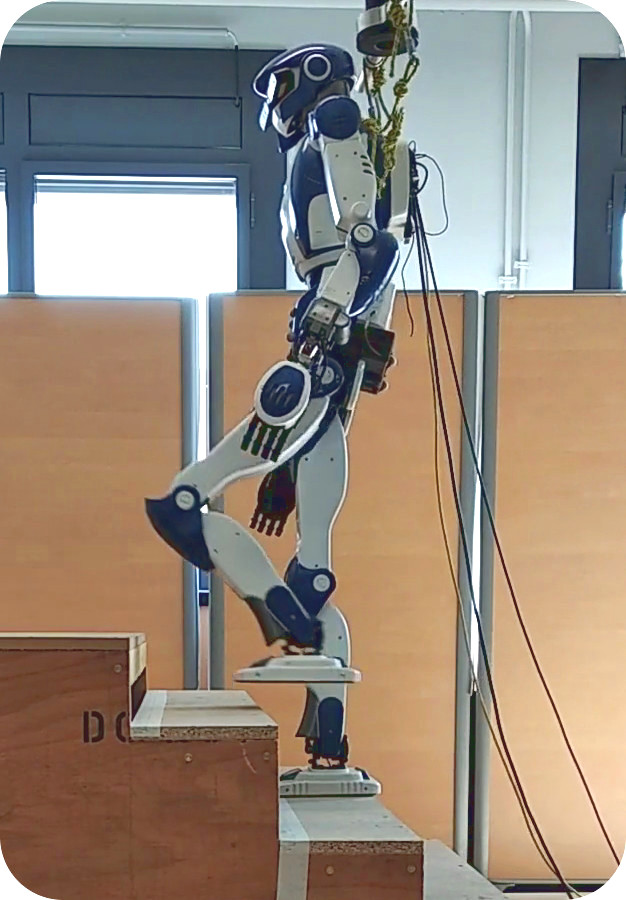Notes in this section connect bits of knowledge on various aspects of robotics, from kinematics and dynamics to locomotion control. Don't hesitate to chime in the discussions if you have questions.
Locomotion ¶

- Capture point
- Floating base estimation
- How do biped robots walk?
- Linear inverted pendulum model
- Open loop and closed loop model predictive control
- Prototyping a walking pattern generator
- Tuning the LIPM walking controller
Models ¶
- Contact flexibility and force control
- Linear inverted pendulum model
- Point mass model
- Wheeled inverted pendulum model
Contact dynamics ¶
- Contact flexibility and force control
- Contact modes
- Contact stability
- Friction cones
- Twisting friction at surface contacts
- Wrench friction cones
- ZMP support area
Dynamics ¶
- Constrained equations of motion
- Equations of motion
- Forward dynamics
- Knee torque of a lumped mass model
- Newton-Euler equations
- Point de non-basculement
- Principle of virtual work
- Recursive Newton-Euler algorithm
- Revolute joints
- Screw theory
- Zero-tilting moment point
Kinematics ¶
- Differential inverse kinematics
- From spatial to body acceleration
- Jacobian of a kinematic task and derivatives on manifolds
- Kinematics jargon
- Kinematics of a symmetric leg
- Position and coordinate systems
- Revolute joints
- Screw axes
- Screw theory
- Spatial vector algebra cheat sheet
See also ¶
-
An Introduction to Lagrange Multipliers
How Lagrange multipliers arise from optimization constraints.
-
Integration Basics
How to integrate the equations of motion.
-
Some comments on the structure of the dynamics of articulated motion
My go-to writeup on the equations of motion.
-
The Principle of Least Action
A special lecture by Richard Feynman.